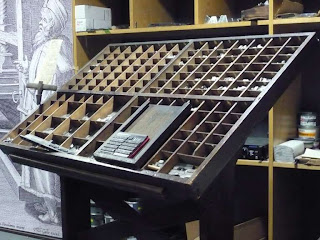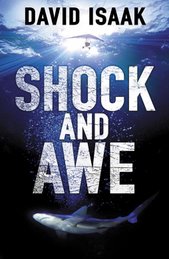 My recent trip took me through Mainz, Germany, to visit my youngest sister Kristie and her husband Ron (the Science Geniuses of the family), who are doing a year's sabbatical at the Max Planck Insitute. They are both atmospheric chemists, and their work has something to do with Global Warming (I gather they are opposed to it).
My recent trip took me through Mainz, Germany, to visit my youngest sister Kristie and her husband Ron (the Science Geniuses of the family), who are doing a year's sabbatical at the Max Planck Insitute. They are both atmospheric chemists, and their work has something to do with Global Warming (I gather they are opposed to it).As it turns out, Mainz is the hometown of Johannes Gutenberg, who invented modern printing around 1450 and thus launched our silly business. As it turns out, Mainz is rather proud of Gutenberg; the city boasts a gigantic Gutenberg Museum (including five copies of the famous 42-line Bible), and the squares and plazas and nooks and crannies are littered with Gutenberg statues. (The most recent, and most Christlike, is the one shown above.)
Naturally, it was impossble for me to pass through town without visiting the Gutenberg Museum; but unfortunately I only allowed about three hours to see the place. Five hours might be more like it; there are several floors, filled with printed material ranging from books to Tarot cards, as well as materials about the history of writing from all over the world. The museum also houses innumerable historical mechanisms, from the earliest screwpresses down to Linotype machines.
Those pigeonholes above are a Type Case, where the compositor selected the letters and inserted them into a Composing Stick (next picture) to form a line of type. The lines were then stacked neatly in order in a wooden box called a galley (final picture). What's remarkable is how little any of this changed until the recent developme nt of digital printing--and how the terminology has survived. (Galleys themselves are long gone, but we still look at galley proofs of our typeset pages.)
nt of digital printing--and how the terminology has survived. (Galleys themselves are long gone, but we still look at galley proofs of our typeset pages.)

Although Gutenberg is often described as the inventor of the printing press, apparently his most important innovation was his way of casting type. The press itself was no big deal. Indeed, as it turns out, the actual printing press was simply a converted wine press. There's a certain poetry in that, don't you think?
 nt of digital printing--and how the terminology has survived. (Galleys themselves are long gone, but we still look at galley proofs of our typeset pages.)
nt of digital printing--and how the terminology has survived. (Galleys themselves are long gone, but we still look at galley proofs of our typeset pages.)
Although Gutenberg is often described as the inventor of the printing press, apparently his most important innovation was his way of casting type. The press itself was no big deal. Indeed, as it turns out, the actual printing press was simply a converted wine press. There's a certain poetry in that, don't you think?




No comments:
Post a Comment